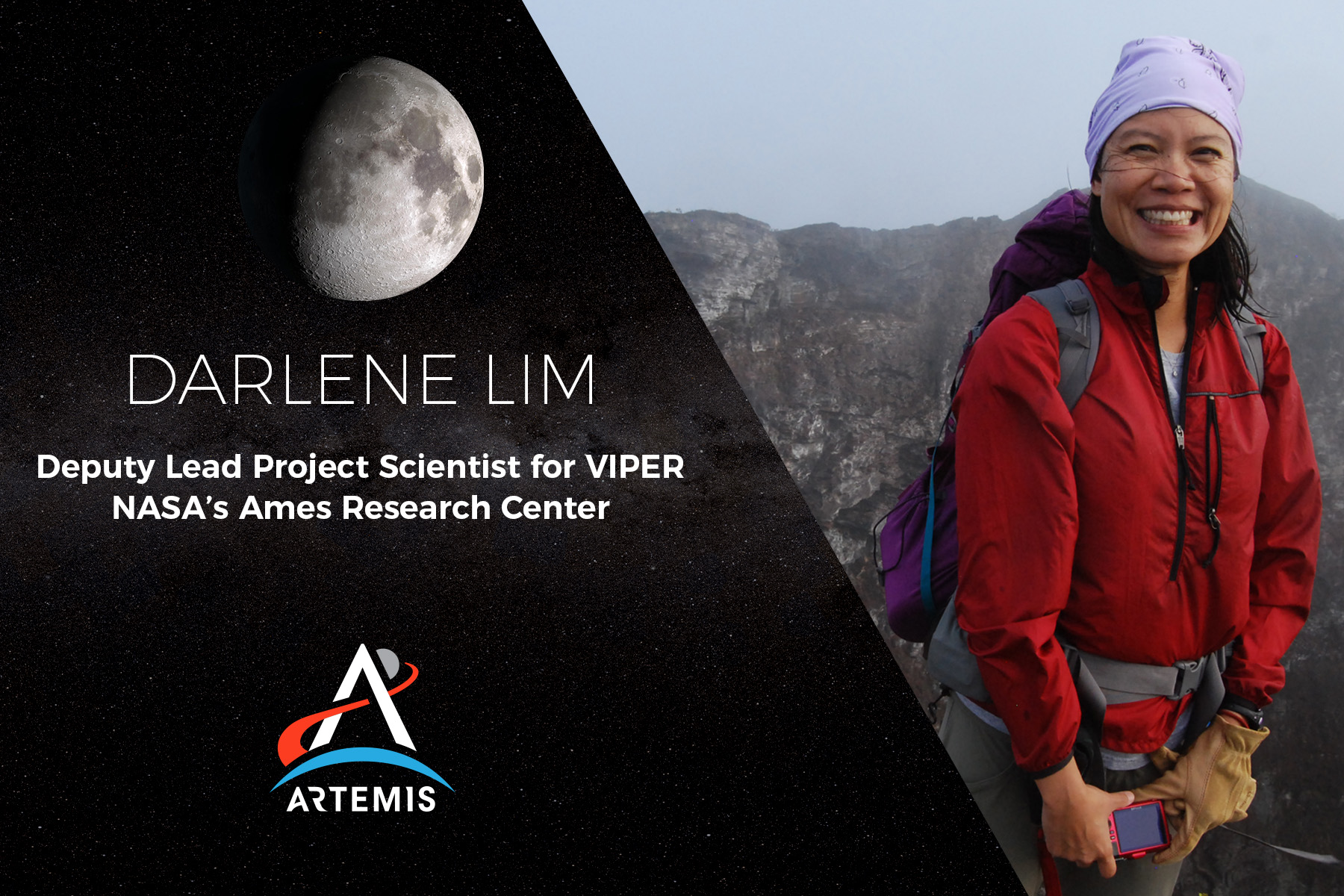You could say Darlene Lim is partial to the extremes – and always has been.
As a child growing up in Alberta, Canada, Darlene Lim learned early how to adapt to harsh temperatures and conditions.
“Being resilient is just a part of life there,” Lim said. “It can be very hard to live in that kind of environment without the right skills and preparation.”
Now, as the deputy lead project scientist for NASA’s Volatiles Investigating Polar Exploration Rover, or VIPER, at the agency’s Ames Research Center in California’s Silicon Valley, Lim has shaped her career around studying some of Earth’s most remote and challenging landscapes. Her field study findings help researchers better understand how to conduct science on other planetary bodies across our solar system, like the Moon and Mars.
VIPER will traverse the lunar South Pole in late 2023 to search for ice and other potential resources that could be harvested to enable long-term human exploration of the Moon and deep space through NASA’s Artemis missions.
During the 100-day scouting mission around the Moon’s Nobile Crater, VIPER will navigate difficult terrain and endure extraordinary temperatures and lighting – familiar conditions for Lim.
“NASA’s VIPER mission is a very exciting opportunity to explore and study the lunar South Pole including below the surface,” Lim explained. “I see my role as enabling the scientists in this unique, first-time operational environment.
VIPER will analyze ice deposits at various depths beneath the lunar surface in real time. The data VIPER sends back to Earth will help us understand how water is created and moves around on the Moon and across the solar system. Data will also be used to create resource maps to help guide decisions about where and how to explore during future Artemis missions.
“I see Artemis as a hopeful endeavor,” Lim said. “It allows us to construct a future for human exploration that is inclusive, and representative of humanity.”
The VIPER mission is managed out of NASA’s Ames Research Center in California’s Silicon Valley, and is scheduled to be delivered to the Moon in late 2023 by Astrobotic’s Griffin lander as part of the Commercial Lunar Payload Services initiative. Construction of the rover will begin in late 2022 at NASA’s Johnson Space Center in Houston, while the rover flight software and navigation system design will take place at NASA Ames. Astrobotic will receive the complete rover with its scientific instruments in mid-2023 in preparation for launch later that year.





























